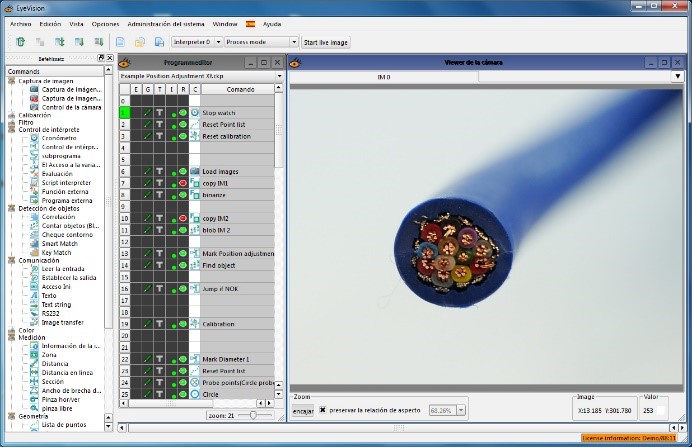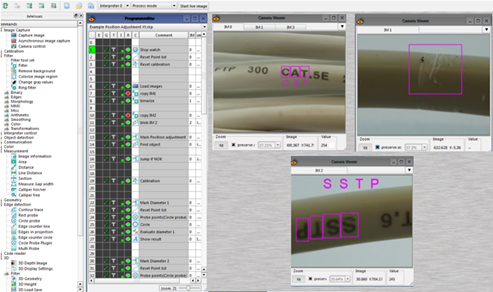

Cable inspection with machine learning (ML) and machine vision software is an advanced method to monitor and verify the quality and integrity of cables. In industrial applications, it is crucial to inspect cables for defects such as damage, insulation faults, connection problems and other defects. By using cameras and EyeVision software with machine learning, these inspections can be automated and made more precise to avoid errors during production.
To prevent such errors during the production of cables, the EyeVision image processing software inspects cables or entire cable harnesses.
The following characteristics are recognized:
- Basic characteristics: Correct position, width as well as length of the cables
- External damage: Cracks, cuts, dents, wear or deformations on the cable sheathing.
- Insulation faults: Irregularities in the insulation layer that indicate potential electrical hazards.
- Conductor inspection: Inspection of the copper or aluminum conductors
- Connectors and contacts: Checking plug connections for correct alignment, position and any corrosion or mechanical damage.
- Color coding and markings: Verification of color and text coding of cables to ensure that the correct cables are used.
This inspection can be enhanced by the software’s machine learning tool, allowing the system to continuously improve itself and optimize the detection of errors. As a result, a wide variety of surfaces such as textiles, fiberboard, metal, plastic, etc. can be inspected using the one-class classifier. This can classify the normal appearance of a good part with just a few defect-free images. In this way, all anomalies such as cracks, grooves, scratches, blowholes, bubbles, inclusions, bumps and pressure marks, etc. on the product are detected.
Cable inspection process with image processing and ML
- Image acquisition: High-resolution cameras capture detailed images or videos of the cables. These can be installed either in production lines or in special test stations.
- Pre-processing of the images: The captured images are pre-processed to remove any interference (e.g. background noise, lighting issues). Techniques such as filtering, edge extraction and contrast adjustment are frequently used.
- Image analysis and feature extraction: The system extracts characteristic features of the cables, such as shape, color, texture and contours, to extract relevant information.
- Error detection by ML: Machine learning analyzes the extracted features and compares them with the learned model. If deviations from the normal values or expected patterns occur, an error is detected.
- Classification and recommended action: The detected fault is classified and the system can suggest appropriate measures, such as removing the defective cable or repairing it.
The advantages are clear: faults are detected more precisely and production processes can be automated and accelerated. In addition, the EyeVision Deep Learning software is very flexible and can be adapted to different cable types and inspection requirements by training the models with new data.
